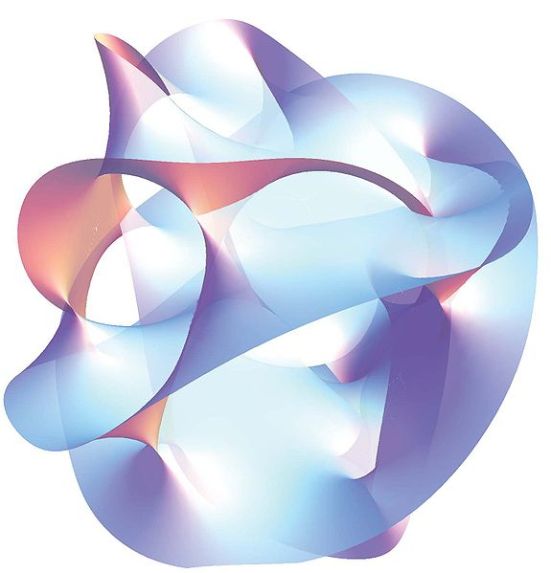Calabi-Yau Space
Calabi-Yau spaces are important in string theory, where one model posits the geometry of the universe to consist of a ten-dimensional space of the form , where is a four dimensional manifold (space-time) and is a six dimensional compact Calabi-Yau space. They are related to Kummer surfaces. Although the main application of Calabi-Yau spaces is in theoretical physics, they are also interesting from a purely mathematical standpoint. Consequently, they go by slightly different names, depending mostly on context, such as Calabi-Yau manifolds or Calabi-Yau varieties.
Although the definition can be generalized to any dimension, they are usually considered to have three complex dimensions. Since their complex structure may vary, it is convenient to think of them as having six real dimensions and a fixed smooth structure.
A Calabi-Yau space is characterized by the existence of a nonvanishing harmonic spinor . This condition implies that its canonical bundle is trivial.
By Mathworld
A Calabi–Yau manifold, also known as a Calabi–Yau space, is a special type of manifold that shows up in certain branches of mathematics such as algebraic geometry, as well as in theoretical physics. Particularly in superstring theory, the extra dimensions of spacetime are sometimes conjectured to take the form of a 6-dimensional Calabi–Yau manifold, which led to the idea of mirror symmetry.
Calabi–Yau manifolds are complex manifolds that are higher-dimensional analogues of K3 surfaces. They are sometimes defined as compact Kähler manifolds whose canonical bundle is trivial, though many other similar but inequivalent definitions are sometimes used. They were named “Calabi–Yau spaces” by Candelas et al. (1985) after E. Calabi (1954, 1957) who first studied them, and S. T. Yau (1978) who proved the Calabi conjecture that they have Ricci flat metrics.
By Wikipedia

A section of a quintic Calabi–Yau three-fold (3D projection)